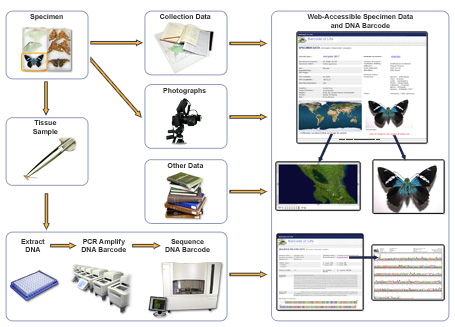About DNA Barcoding
DNA Barcoding is a method of species identification using a short sequence of DNA from a specified region of the genome. This short DNA sequence is used for identification by comparing and matching to large libraries of sequences from known species. The advantage of using these short sections of DNA is that they can be sequenced quickly and cheaply but still provide enough information to identify variation among species.
One of the most widely used barcoding regions is a 648 nucleotide segment of the cytochrome c oxidase I gene (also known as COXI or CO1) of the mitochondrial genome. It is being used in species identification and discovery in almost all animal groups including birds, insects, fish, and snails, etc.. However, the COI barcode is not effective for identification of plants. Plant mitochondrial genomes have different structure and characteristics of change when compared to animal mitochondrial genomes. Plant biologists have identified to different gene regions in the chloroplast, matK and rbcL, that together serve as the identification barcode for land plants.
To begin a barcoding project to identify specimens of interest, the first step is to collect and properly preserve tissues for genetic analyses. Next, DNA is extracted from the preserved tissues and a biochemical reaction known as the Polymerase Chain Reaction (or PCR) is used to selectively copy the barcode region billions of times. The graphic below illustrates steps on the barcoding process.

(Illustrations from ibol.org)


